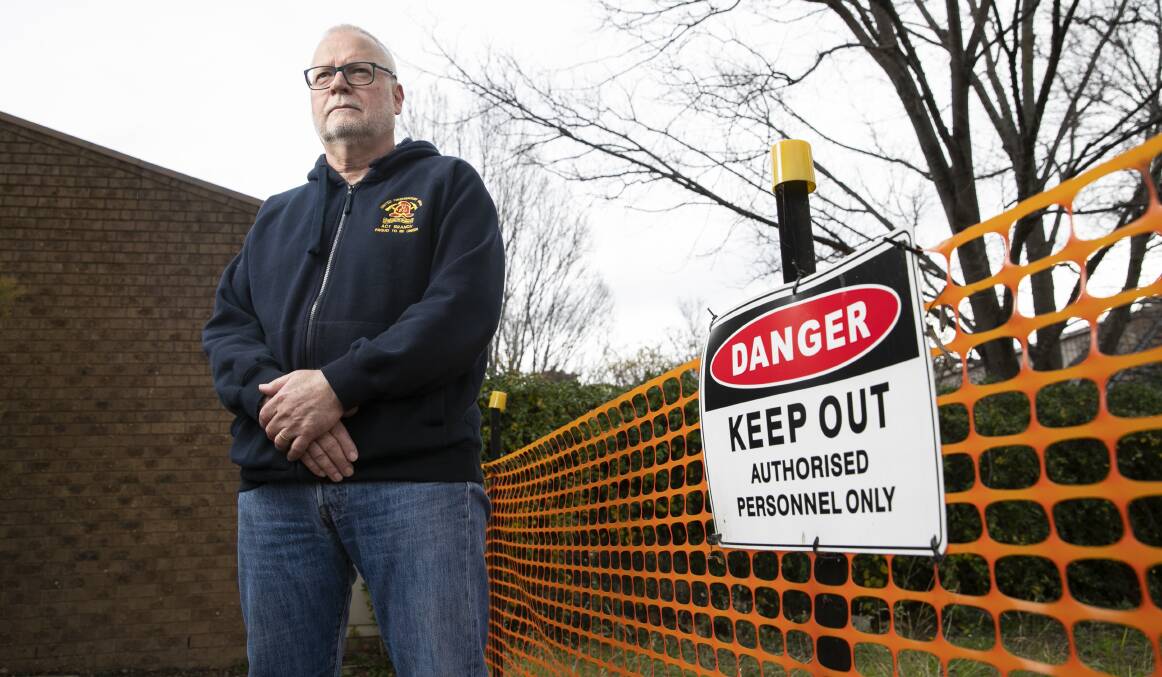
To head off potential litigation, earth-moving equipment will roll into eight emergency services sites around Canberra over the next 12 months to drag out or cap off soil contaminated by the high toxic "forever chemical" PFAS.
The ACT government committed $2.1 million in last week's budget for the next financial year, and a further $12.4 million over the following three years, to either remove or encapsulate the PFAS health threat.
Joint emergency services stations in Kambah, Fyshwick and Ainslie will be the priority for the ACT as they were found to have PFAS levels exceeding thresholds defined in a nationally agreed environmental management plan.
Each of the ACT remediation sites will be independently audited for compliance.
A successful class action in the Federal Court this month provided further impetus to urgent PFAS remediation work at exposure sites around the country.
Private land surrounding seven RAAF bases nationwide were found to be contaminated by the storage and use of the foams, with $132.7 million awarded in the legal action, shared across some 30,000 landholders. Another case involving the Wreck Bay Aboriginal Community Council was adjourned for further mediation.
This is on top of the $212 million paid out previously to landholders near the giant Tindal (NT) and Williamtown (NSW) air bases..
Next on the ACT target list for remediation are ESA sites at Phillip and Chisholm, the Gungahlin joint emergency services centre, the Greenway ambulance centre which was a former ACT Fire and Rescue site, and even the Forrest Fire Museum.
A national plan was signed off in 2018 after it was found there needed to be a collective response due to the thousands of site exposures.
Going back decades, synthetic per-and poly-fluoroalkyl substances (PFAS) were used across a range of products from food packaging, carpeting, non-stick cookware, makeup and clothing but were concentrated in firefighting foams because they were highly effective surfactants which cooled and suppressed fires.
What wasn't known at the time was the enormous health and environmental implications of using them.
PFAS are both environmentally and temperature resilient and once in the environment, are very hard to eliminate. When the toxic chemical leaches into waterways and water sources such as bores, and then into pasture and crops, its affects become even more widespread.
Animal tests have found PFAS affects the liver, gastrointestinal tract and thyroid hormones and while its long-term effects on humans are still being studied, is almost certainly a trigger for some cancers.
In the ACT, AFFF foam concentrates were withdrawn from use by ACT Fire & Rescue in April 2005 and replaced with fluorine-free concentrate. Extinguishers containing film-forming foams were phased out and replaced in early 2017.
Aviation was a specific focus for PFAS because these chemical foams worked particularly quickly and effectively, which is a specific fire-fighting priority when dealing with highly combustible jet fuel.
Greg McConville, secretary of the United Firefighters Union (UFU), said the ACT's investment in local PFAS remediation at station sites was welcome, but had taken "a very long time" to happen.
"But to date, nothing has been done about the people," he said.
"Firefighters were routinely exposed to these chemicals in the course of their career and at least one workers compensation determination has linked PFAS exposure to non Hodgkin's lymphoma.
"In 2020 the UFU obtained agreement for a health screening initiative for firefighters. Our costings which were provided to government attached over $1.6 million to the health screening initiative.
"We fail to understand how it has taken almost three years to reach a point where we are only now going to market to fund this important initiative. Serious questions arise as to what has happened to that $1.6 million."
We've made it a whole lot easier for you to have your say. Our new comment platform requires only one log-in to access articles and to join the discussion on The Canberra Times website. Find out how to register so you can enjoy civil, friendly and engaging discussions. See our moderation policy here.







